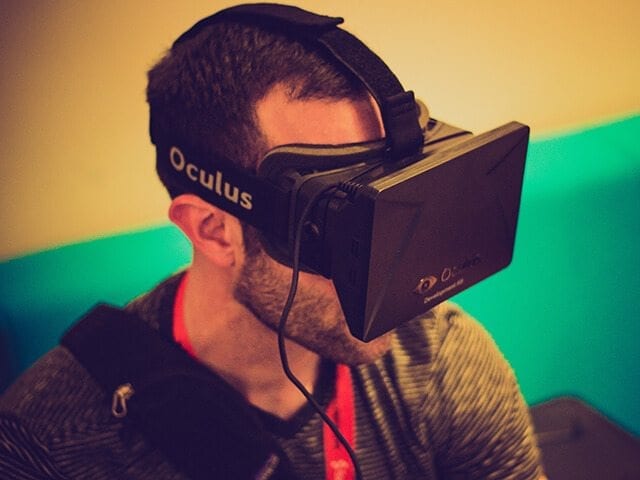Virtual Reality (VR) is no longer confined to the realms of gaming and entertainment; it has emerged as a groundbreaking technology that is reshaping the landscape of healthcare and medicine. This immersive and interactive technology has the potential to revolutionize patient care, medical training, and therapeutic interventions. In this article, we delve into the profound impact of virtual reality on healthcare and medicine, exploring its applications, benefits, and future prospects.
The Advent of Virtual Reality in Healthcare
Virtual Reality, often abbreviated as VR, is a simulated experience created with the help of computer technology. It immerses the user in a digital environment that can be either a realistic representation of the physical world or an entirely fictional one. While the concept of VR has been around for decades, recent advancements in hardware and software have made it more accessible and versatile than ever before.
The application of VR in healthcare began primarily as a tool for medical training and education. Medical students and professionals could use VR to practice surgical procedures, explore 3D anatomical models, and gain valuable hands-on experience in a risk-free virtual environment. This not only improved the quality of medical education but also enhanced the skills and confidence of healthcare practitioners.
Transforming Medical Training and Education
One of the most significant impacts of VR in healthcare is its ability to revolutionize medical training and education. Traditional medical training often involves extensive textbooks, 2D images, and limited opportunities for practical learning. VR changes the game by providing an immersive learning experience. Medical students can now don VR headsets and step into a virtual operating room, where they can practice surgeries, diagnose patients, and interact with lifelike anatomical models. This hands-on approach not only accelerates the learning curve but also fosters better retention of knowledge.
Enhancing Patient Care
Beyond education, VR is making waves in patient care. Hospitals and healthcare facilities are increasingly adopting VR as a therapeutic tool. For patients dealing with chronic pain, anxiety, or post-traumatic stress disorder (PTSD), VR can offer a welcome escape from their physical surroundings. By immersing patients in calming and distraction-inducing VR experiences, healthcare providers can alleviate discomfort and reduce the need for pain medication.
Moreover, VR is being used for physical rehabilitation. Patients recovering from injuries or surgeries can engage in interactive VR exercises that make the rehabilitation process more engaging and motivating. This leads to better compliance with treatment plans and faster recovery times.
Surgical Precision and Planning
Surgeons are also reaping the benefits of VR technology. VR allows them to plan complex surgeries with greater precision. Using 3D models created from patient scans, surgeons can practice procedures beforehand, identify potential challenges, and develop effective strategies. This not only improves the success rate of surgeries but also reduces the risk of complications.
During surgery, VR can provide real-time guidance. Surgeons can wear VR headsets that display critical information like patient vitals, imaging scans, and surgical plans, all while keeping their hands free to perform delicate procedures. This augmented reality aspect of VR enhances surgical accuracy and safety.
Telemedicine and Remote Consultations
The COVID-19 pandemic accelerated the adoption of telemedicine, and VR has played a role in making remote consultations more immersive and effective. Patients can have virtual appointments with healthcare providers in a virtual clinic setting, where they can interact with a digital representation of their doctor. This not only provides a sense of presence but also allows for better visualization and explanation of medical conditions and treatment options.

Challenges and Ethical Considerations
While the potential of VR in healthcare is immense, it also comes with challenges and ethical considerations. Privacy and data security are paramount concerns, especially when dealing with sensitive medical information in a virtual environment. Ensuring the accuracy and reliability of VR simulations is another challenge that healthcare providers must address.
Additionally, the cost of implementing VR technology in healthcare settings can be substantial, making it less accessible to smaller clinics and underfunded healthcare systems. As VR continues to advance, addressing these challenges will be crucial to realizing its full potential in healthcare and medicine.
The Future of Virtual Reality in Healthcare
The impact of virtual reality on healthcare and medicine is still unfolding, and the future holds exciting possibilities. As technology continues to evolve, we can expect more sophisticated and lifelike VR experiences. This will further enhance medical training, patient care, and surgical precision.
In conclusion, virtual reality is not just a futuristic concept; it is already reshaping the healthcare and medical landscape. From transforming medical education to improving patient care, VR is a transformative tool that holds immense promise. However, its widespread adoption will require addressing challenges and ensuring ethical use. As we look to the future, the integration of virtual reality in healthcare promises a brighter and more innovative path for the industry. Please take a moment to visit their page to find more info about the impact of virtual reality on healthcare.

